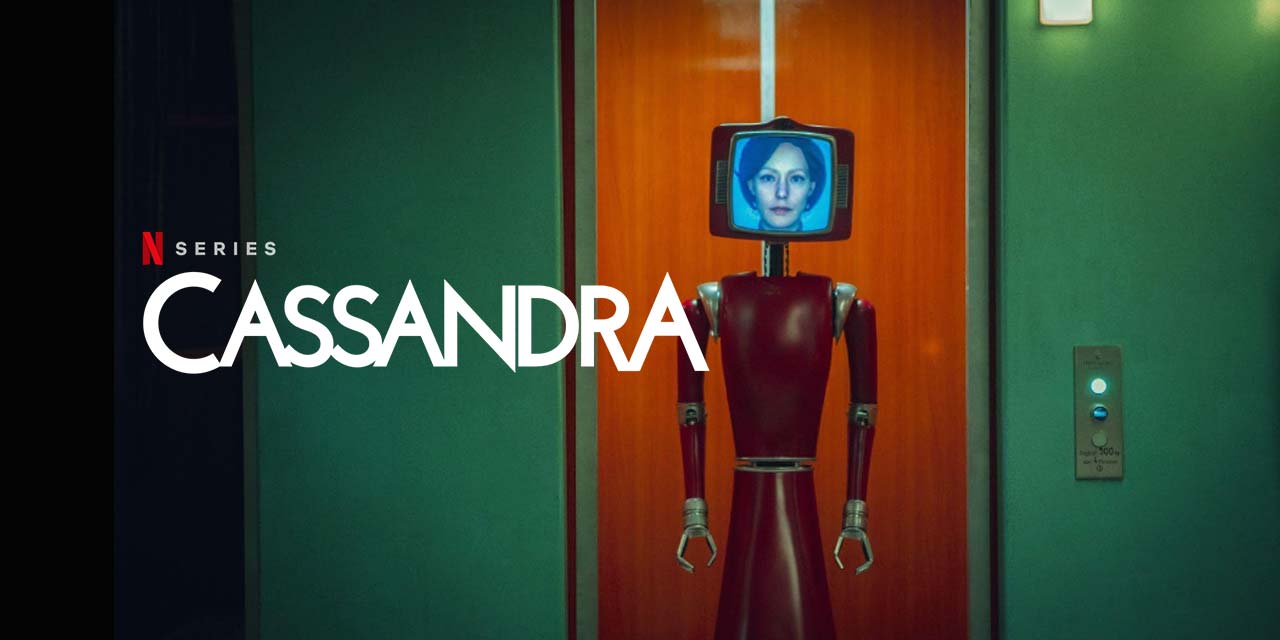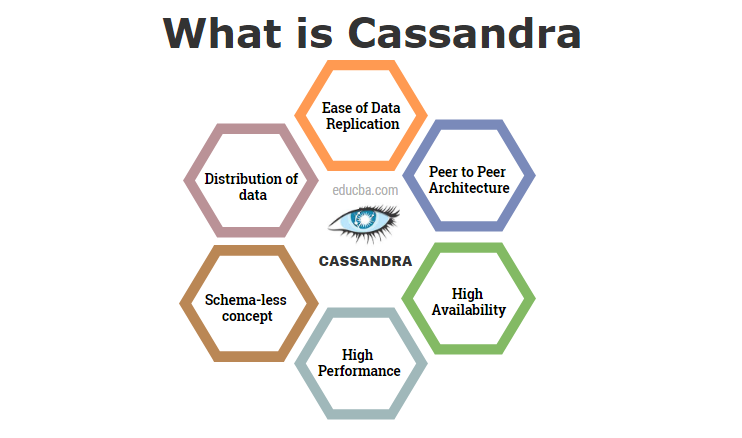Have you ever considered how a single name, "Cassandra," can mean so many different things? It's almost fascinating, really. From tales of ancient times, steeped in myth and prophecy, to the very backbone of modern data systems that keep our online world humming, the name just pops up in some truly unexpected places. We're going to take a little look at these different facets, you know, how this one name has such a varied presence in our lives, from stories passed down through generations to the complex digital tools thousands of companies rely on every single day.
It's quite a journey, thinking about it, how a figure from Greek mythology, a Trojan princess with a rather unfortunate gift, could share a name with a powerful, open-source database. This database, Apache Cassandra, is a big deal in the world of technology, providing some serious muscle for handling vast amounts of information. It offers amazing scalability and high availability, which are pretty important qualities for businesses that need their data to be ready and waiting at all times, without any hiccups.
So, too it's a name that bridges worlds, in a way. On one side, you have the dramatic narratives of old, full of gods, heroes, and tragic fates. On the other, you have the very practical, high-tech solutions that underpin much of the internet's structure. This article will help us explore both, giving us a clearer picture of just what "Cassandra" truly represents, whether you're interested in ancient lore or the cutting-edge of data management, or perhaps even a bit of both.
Table of Contents
- The Mythological Cassandra: A Tale of Prophecy and Unbelief
- Apache Cassandra: A Modern Database Marvel
- The Cassandra Metaphor and Modern Interpretations
- Frequently Asked Questions
The Mythological Cassandra: A Tale of Prophecy and Unbelief
Let's first turn our thoughts to the ancient stories, where the name Cassandra has a very specific and rather poignant meaning. She was, you know, a princess from the great city of Troy, a daughter born to King Priam and Queen Hecuba. Her story is a rather sad one, actually, a classic example of a tragic figure in Greek mythology. She received a truly extraordinary gift, a bit of a blessing and a curse all rolled into one, as these things often are in those old tales.
According to some of the older and more widely told versions of her myth, the god Apollo himself granted her the gift of prophecy. Imagine that, being able to see the future! But, there was a twist, a very cruel one, as these divine gifts sometimes come with. When Cassandra spurned Apollo's advances, he cursed her. Her prophecies, though always true and accurate, would never, ever be believed by anyone. This meant she foresaw the destruction of her beloved Troy, the Trojan Horse, and all the terrible events that would unfold, but she was powerless to convince her people. It's a rather stark reminder, isn't it, of the burdens that can come with extraordinary insight.
Cassandra: Personal Details and Biography
| Detail | Description |
|---|---|
| Name | Cassandra (also known as Alexandra) |
| Parents | King Priam and Queen Hecuba of Troy |
| Origin | Greek Mythology, Trojan Princess |
| Key Attribute | Gift of Prophecy |
| Curse | Prophecies would never be believed |
| Significant Event | Foresaw the Fall of Troy |
Apache Cassandra: A Modern Database Marvel
Now, shifting gears quite a bit, we come to a completely different "Cassandra," one that powers much of the digital world we experience today. Apache Cassandra is, to put it simply, a rather impressive piece of software. It's an open-source NoSQL distributed database, which might sound a bit technical, but what it really means is that it's designed to handle huge amounts of data across many servers, providing a very reliable and fast experience. Thousands of companies, big and small, trust it for some very good reasons, you know.
One of the truly great things about this database is its ability to scale, horizontally. This means that as your data needs grow, you don't have to get a bigger, more expensive single server. Instead, you can just add more ordinary servers, and Cassandra spreads the data across them. This makes it incredibly flexible and cost-effective for businesses that are growing rapidly. It also aims for high availability, meaning your data is almost always there when you need it, without any single point of failure that could bring everything down. That's a pretty important consideration for businesses these days.
What is Apache Cassandra?
So, what exactly is Apache Cassandra at its core? Well, it's a NoSQL database, which is a bit different from the traditional relational databases many people might be familiar with. NoSQL databases are built for flexibility and handling very large datasets that might not fit neatly into rows and columns. Cassandra, in particular, is a distributed database, meaning it's designed to run across multiple machines, or nodes, all working together as one system. This architecture is really what gives it its remarkable resilience and capacity.
It was created, you know, to handle massive amounts of information across many commercial servers, providing a very high level of availability without any single point of failure. This means that if one part of the system goes down, the rest keeps going, which is a rather comforting thought for anyone relying on constant data access. It's a system built for performance, too, making sure that even with all that distribution and redundancy, you don't compromise on how quickly you can get your data.
Strengths and Key Features
Among the many good things about Apache Cassandra, its horizontal scalability really stands out. This ability to add more machines as needed, rather than upgrading existing ones, means businesses can grow their data infrastructure very smoothly. It's a design that supports continuous uptime, which is a critical need for modern applications that simply cannot afford to be offline, even for a moment. This kind of robust design is why it's trusted by so many organizations, honestly.
The system is also quite strong when it comes to high availability. This is achieved by replicating data across different nodes in the cluster, so if one node becomes unavailable, the data is still accessible from another. This provides a very resilient setup, a bit like having multiple backups ready to go at all times. The focus on performance means that even with all these safeguards, data operations remain very quick, which is essential for applications that demand speedy responses.
Getting Started with Cassandra
For those interested in exploring this powerful database, getting started with Cassandra can actually be quite straightforward. The official documentation for Apache Cassandra is a very good place to begin, offering all the main concepts and explaining how Cassandra works at a high level. It's designed to help you get a basic grasp of its architecture and how it manages data, which is pretty useful for anyone just dipping their toes in.
If you want to try it out, you can typically start the Cassandra service with a simple command like `sudo service cassandra start` and stop it with `sudo service cassandra stop`. However, quite often, the service will just start up automatically when your system boots, which is rather convenient. For a deeper dive, the documentation also guides you on understanding Cassandra in much more detail, covering everything from data modeling to cluster management. It's a system that lets you get going, fast, which is a nice touch for developers.
Did you know that contributing to this documentation is also an option? If you're keen to help out, you're certainly welcome to do so by submitting your contributions, just like any other patch. This open approach is part of what makes open-source projects like Cassandra so vibrant and constantly improving, you know, with people from all over the world helping to make it better for everyone.
Client Drivers and Compatibility
To really use Apache Cassandra in your applications, you'll need what are called client drivers. These are basically software libraries that allow your chosen programming language to communicate with the Cassandra database. There are known Cassandra client drivers organized by language, so whether you're coding in Python, Java, Node.js, or something else, there's very likely a driver available for you. This makes it quite accessible for a wide range of development projects.
Before you pick a driver, though, it's a good idea to check something important: you should verify the Cassandra version and the specific functionality supported by that particular driver. Not all drivers are created equal, and some might work better with certain Cassandra versions or offer different features. This little bit of checking helps ensure that your application will work smoothly with your database setup, avoiding any unexpected issues down the line. It's a small step, but it can save a lot of headaches, honestly.
The Cassandra Metaphor and Modern Interpretations
Beyond the ancient princess and the modern database, the name "Cassandra" also lends itself to a rather intriguing metaphor. This concept, sometimes called the Cassandra syndrome, complex, phenomenon, predicament, dilemma, or even curse, relates to a person whose valid warnings or concerns are consistently disbelieved or ignored by others. It's a powerful idea, isn't it, reflecting that ancient myth where Cassandra's true prophecies were never heeded, leading to tragic outcomes.
This metaphor finds its way into many aspects of life, from environmental warnings that go unaddressed to financial crises that were predicted but dismissed. It highlights the frustration and helplessness of knowing something important but being unable to convince others. It's a rather poignant parallel to the original myth, showing how ancient stories can still resonate with our experiences today. You know, it's a situation that includes a number of surprises that viewers may not anticipate, reflecting how difficult it can be when truth is ignored.
Interestingly, the name "Cassandra" has also appeared in more contemporary forms, like in modern media. For example, the voice of Cassandra, a domestic AI utilized by a German family in some narrative, is performed by Lavinia Wilson. This kind of portrayal gives the ancient name a whole new, futuristic spin, bringing it into the realm of artificial intelligence and daily life. It's a fascinating evolution for a name that started in the very distant past, showing how it continues to inspire and adapt to new contexts, still carrying that sense of knowing, even if it's an AI knowing things.
Frequently Asked Questions
What makes Apache Cassandra different from other databases?
Well, Apache Cassandra stands out because it's a NoSQL distributed database, designed for handling very large amounts of data across many servers. Its strength is in its horizontal scalability, meaning you can add more machines to grow, and its high availability, which means it keeps running even if some parts fail. It's a bit different from traditional databases that rely on single, very powerful machines, you know, making it very flexible for big data needs.
What is the "Cassandra curse" in mythology?
The "Cassandra curse" in Greek mythology refers to the tragic gift given to Princess Cassandra by the god Apollo. She received the ability to see the future, but because she rejected Apollo, he cursed her so that her true prophecies would never be believed by anyone. This meant she could foresee terrible events, like the fall of Troy, but was completely unable to convince her people to act on her warnings, which is a rather sad fate, isn't it?
How can one contribute to Apache Cassandra's documentation?
If you're interested in helping improve the official documentation for Apache Cassandra, it's actually quite straightforward. You are very welcome to contribute by submitting your suggestions or corrections, much like any other patch or code contribution to an open-source project. This collaborative approach helps keep the documentation accurate and helpful for everyone who uses Cassandra, which is a pretty cool way to get involved, honestly.



Detail Author:
- Name : Edmond Turcotte Jr.
- Username : bailey.rosanna
- Email : lesly49@hartmann.com
- Birthdate : 1995-10-07
- Address : 26467 Barney Unions Morissetteport, MA 91184
- Phone : 386-470-4937
- Company : Bartell Ltd
- Job : Health Services Manager
- Bio : Libero nam in adipisci. Veritatis quo dolor beatae. Fugit nihil doloremque sed illo nisi a. Animi ut fuga autem nihil ut impedit.
Socials
instagram:
- url : https://instagram.com/wilson2276
- username : wilson2276
- bio : Nulla veniam in asperiores. Repudiandae ex laudantium saepe. Aut voluptas culpa autem quia.
- followers : 914
- following : 1484
linkedin:
- url : https://linkedin.com/in/wilson4874
- username : wilson4874
- bio : Amet beatae commodi blanditiis dolorem eius.
- followers : 6630
- following : 1631
facebook:
- url : https://facebook.com/wilson_xx
- username : wilson_xx
- bio : Quisquam quo cumque quia voluptatem. Assumenda veniam id eum laborum.
- followers : 5104
- following : 1831